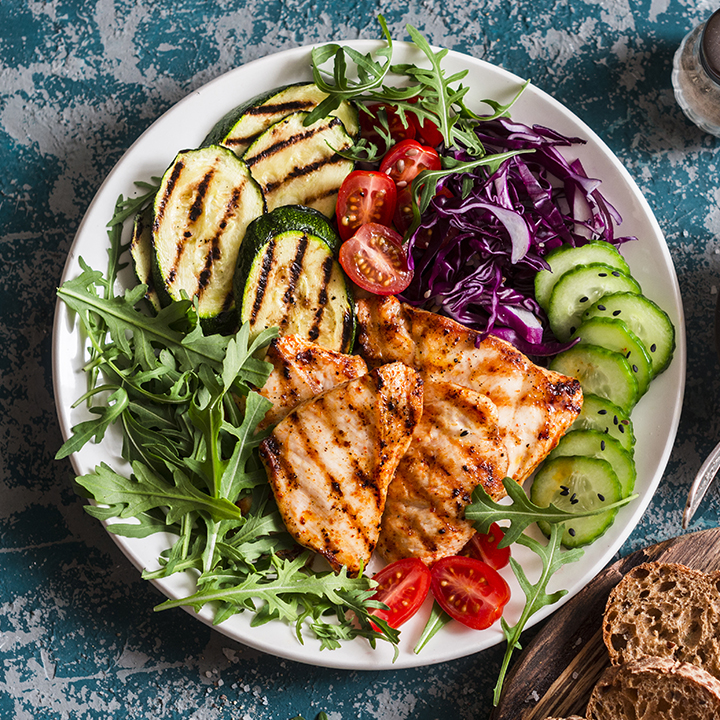Managing your weight is a key aspect of leading a healthy lifestyle, but it’s important to approach it in a way that’s both safe and effective. Many people turn to extreme diets or excessive exercise routines to lose weight quickly, but these methods are often unsustainable and can be harmful. Instead, focusing on balanced habits that support long-term health is the best way to control your weight without compromising your well-being. Here’s how to manage your weight safely and effectively:
1. Understand Your Unique Caloric Needs
Weight management begins with understanding how many calories your body needs. Everyone’s energy requirements are different, depending on factors such as age, gender, activity level, and metabolism. To lose weight safely, you should create a moderate calorie deficit—consuming fewer calories than your body burns—but avoid extreme reductions, which can slow down metabolism and lead to nutrient deficiencies.
Tip: Use a calorie calculator to estimate your daily caloric needs, then adjust your intake by 10-20% to create a mild deficit, ensuring you still get the nutrients you need.
2. Eat a Nutrient-Dense, Balanced Diet
The foundation of weight control is a healthy, well-rounded diet. Instead of cutting out entire food groups or following fad diets, focus on eating a variety of whole foods. Prioritize nutrient-dense meals rich in vegetables, fruits, lean proteins, whole grains, and healthy fats. These foods are packed with essential vitamins and minerals that help your body function at its best while promoting fullness and satisfying cravings.
Tip: Make your meals colorful by including a variety of vegetables and fruits. Incorporate lean protein (chicken, tofu, fish), whole grains (brown rice, quinoa), and healthy fats (avocado, olive oil, nuts).
3. Avoid Drastic Calorie Cutting
While reducing your calorie intake is necessary for weight loss, extreme calorie restriction can lead to muscle loss, fatigue, and nutrient deficiencies. It’s crucial to strike a balance where you’re still getting enough calories to fuel your body while creating a mild deficit for weight loss. Gradual weight loss (1-2 pounds per week) is safer and more sustainable than quick, drastic changes.
Tip: Focus on reducing calorie intake by eliminating excess sugar, processed foods, and unhealthy fats, rather than drastically cutting calories across the board.
4. Focus on Portion Control
Sometimes, weight gain isn’t about what you’re eating—it’s about how much you’re eating. Even healthy foods can contribute to weight gain if you’re not mindful of your portion sizes. Being conscious of your portion sizes can help prevent overeating and help you maintain a healthy balance.
Tip: Use smaller plates, measure servings, and avoid eating directly from packages. Stop eating when you’re satisfied, not stuffed.
5. Incorporate Regular Physical Activity
Exercise is a vital component of weight management, as it not only burns calories but also builds muscle, which boosts your metabolism. A combination of cardiovascular exercise (like walking, jogging, cycling) and strength training (such as weightlifting or bodyweight exercises) helps maximize fat loss and improve overall fitness.
Tip: Aim for at least 150 minutes of moderate-intensity exercise or 75 minutes of vigorous-intensity exercise per week. Include two strength-training sessions each week to build lean muscle.
6. Prioritize Sleep
Sleep is a crucial, often overlooked, factor in weight management. Poor sleep can lead to imbalances in hormones that regulate hunger and appetite, causing you to crave high-calorie, unhealthy foods. Lack of sleep can also affect your energy levels, making it harder to stick to an active routine.
Tip: Aim for 7-9 hours of quality sleep each night. Maintain a consistent sleep schedule, avoid caffeine in the afternoon, and create a relaxing bedtime routine.
7. Manage Stress Effectively
Chronic stress can negatively impact weight control by triggering emotional eating and increasing cravings for unhealthy foods. Stress causes the release of cortisol, a hormone that can lead to weight gain, particularly around the abdominal area. Learning how to manage stress is key to controlling your weight safely.
Tip: Practice stress-relieving activities like yoga, meditation, deep breathing exercises, or journaling. Regular physical activity is also an excellent way to combat stress.
8. Stay Hydrated
Drinking enough water is essential for maintaining a healthy metabolism and regulating hunger. Sometimes, thirst is mistaken for hunger, leading to overeating. Staying hydrated helps you feel full and satisfied, supports digestion, and keeps your energy levels up.
Tip: Aim to drink at least 8 cups (64 ounces) of water a day. Drinking a glass of water before meals can help control appetite and prevent overeating.
9. Make Sustainable Lifestyle Changes
Quick fixes, extreme diets, and intense workout programs often fail because they are unsustainable in the long run. To control your weight effectively, focus on making gradual, manageable lifestyle changes that you can stick with. Rather than obsessing over perfection, aim to build habits that promote your health and fit into your daily routine.
Tip: Focus on consistency rather than perfection. Gradual improvements, such as choosing healthier snacks or walking more throughout the day, will add up over time and help you maintain weight.
10. Seek Professional Guidance
If you’re struggling to control your weight or facing challenges along the way, consider seeking the help of a healthcare provider, nutritionist, or personal trainer. Professionals can offer personalized advice based on your unique needs and goals, helping you develop a safe and effective weight control plan.
Tip: Working with a professional ensures that you’re on the right track and helps you avoid common pitfalls like nutritional deficiencies or over-exercising.









